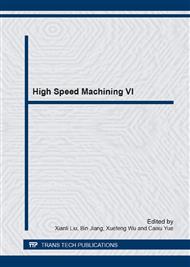p.761
p.766
p.771
p.776
p.782
p.788
p.793
p.798
p.803
A Study on Energy Consumption of a CNC Milling Machine Based on Cutting Force Model
Abstract:
Machining operations are performed by machine tools with a large amount of energy consumed for material removal. Understanding and characterizing the energy consumption is essential to explore the potential of energy-saving in energy-efficient machining. For this purpose, this paper proposes a method for modeling energy consumption of end milling operation which is based on cutting theory. The cutting power model is verified with experiments on a CNC milling machine. According to the calculated and experimental results, it is clear that the theoretical prediction can predict the mean cutting power successfully as validated by actual measurements.
Info:
Periodical:
Pages:
782-787
Citation:
Online since:
July 2014
Authors:
Keywords:
Price:
Сopyright:
© 2014 Trans Tech Publications Ltd. All Rights Reserved
Share:
Citation:


